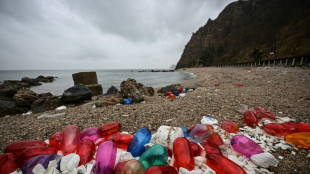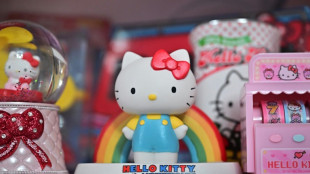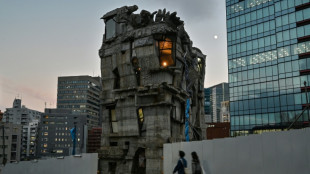

'Living gallery': fighting to save Hong Kong's fading neon signs
Neon signs once transformed Hong Kong's oldest neighbourhoods into a kaleidoscope of luminous colour after dark, but most have been removed with a few lucky ones now piled up in a ramshackle yard.
Citing safety concerns, city authorities have begun extinguishing the neon signs, which are widely seen as part of Hong Kong's heritage.
"It is very heartbreaking to hear the sound of the glass being smashed," conservationist Cardin Chan told AFP.
Chan is part of a preservation campaign led by Tetra Neon Exchange (TNX), which has an open-air storage yard that maintains a treasure trove of historic signs taken down by the city.
She says she is on a mission to "save" the glowing billboards, which once numbered in the thousands.
There are now around 500 signs left, based on a 2022 count carried out by TNX.
The group's latest acquisition is a pair of double-circle-shaped behemoths depicting a bat clawing a coin.
Once hoisted outside a pawn shop in the working-class Sham Shui Po district, news of their pending removal had quickly spread on social media, drawing dozens of enthusiasts eager to take pictures of their last light.
"I'll be very sad to see the signs come down. They're beautiful things, with very warm, welcoming colours," store owner Dan Ko said the day before they were removed.
"It's an integral part of the city's visual history."
- 'An art piece' -
Neon once illuminated the diverse businesses that pockmarked Hong Kong's streets, announcing in hues of bright green, red, blue and yellow the availability of bridal wear, jewellery, hotel rooms, fishball noodles and much more.
"Our streets used to be a living gallery," Chan says.
But the signs pose a "persistent building safety problem", according to Hong Kong's buildings department, and uninstalling them can be a delicate task.
The ones from Ko's pawn shop were three metres in length and two in width, with dozens of handcrafted neon tubes running through them.
A single worker spent hours meticulously removing the tubes while keeping the electronics intact, some of which have been untouched since they were first erected decades ago.
They depict a complex "double happiness" Chinese character atop the pawn shop's name -- unique to Ko's chain -- which is what initially caught Chan's eye.
"It's an art piece. It is not like a piece of junk metal," she says.
She spent almost a month looking for Ko, before convincing him to preserve his signs.
Today, they are nestled against other faded plaques adorned with intricate designs -- ranging from Chinese characters to palm trees -- in a rural part of Yuen Long district.
Chan hopes to one day display them in a "museum-grade facility" safe from the elements, but TNX "can't afford it" at the moment.
"It was sad for me to see the signs removed. They could no longer be seen in their natural habitat," Chan says.
"But I think as a consolation, at least we could give them a home instead of witnessing them being trashed."
W.Murphy--NG



